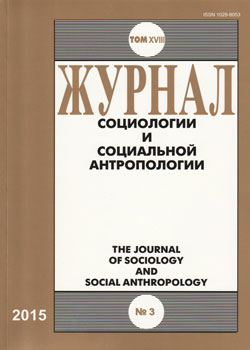Group Meeting as an Interaction Ritual: Producing Cultural Capital and Emotional Energy in “Anonymous” Mutual Help Communities
Keywords:
microsociology, interaction ritual, emotional energy, cultural capital, narrative, mutual help communities, rehabilitation
Abstract
The work of 12-Steps mutual-help communities has long been a subject of the interdisciplinary analysis from diverse theoretical and methodological perspectives. One of the leading approaches, the constructivist narrative perspective, studies members’ personal changes and identity transformation through the adoption of the community’s shared narrative as a part of members’ personal stories, whereas communities themselves are seen as “normative narrative communities”. However, the majority of approaches in the field ignore the relationships between different aspects and factors in the functioning of communities. The paper considers Randall Collins’s interaction ritual theory as an alternative approach and applies it in the study of Narcotics Anonymous and Family Anonymous fellowships. This approach uncovers the effects and outcomes of the regular group interactions, in which interaction ‘mechanics’ associates with both narrative-discursive practices and emotional reactions. The organization of group meetings, which are within the scope of the paper, stimulates such outcomes as ‘cultural capital’ constituted by program representations as community symbols and ‘emotional energy’ as the feeling of solidarity, enthusiasm and commitment. Group interactions — meetings in particular — are seen as the core component in the therapeutic mechanism of the communities, while ‘cultural capital’ and ‘emotional energy’ — as the foundation for identity transformation and internalization of the program ideology.
Published
2015-05-20
How to Cite
Prozorova, J. (2015). Group Meeting as an Interaction Ritual: Producing Cultural Capital and Emotional Energy in “Anonymous” Mutual Help Communities . ZHURNAL SOTSIOLOGII I SOTSIALNOY ANTROPOLOGII (The Journal of Sociology and Social Anthropology), 18(3), 65–79. Retrieved from http://jourssa.ru/jourssa/article/view/399
Section
Sociology of Social Problems

